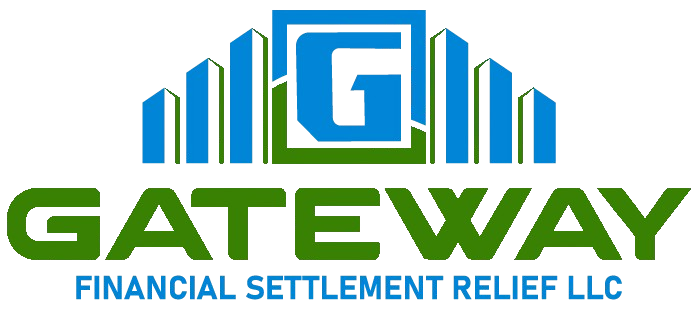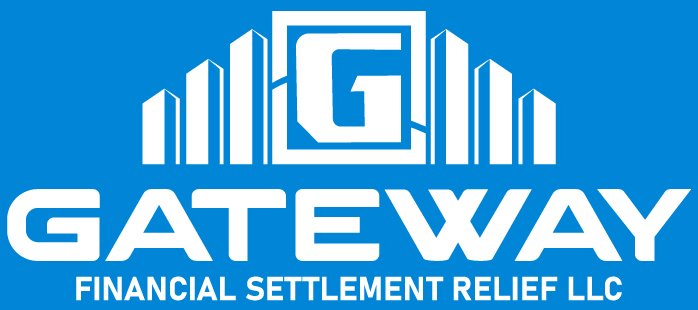Understanding Credit Card Debt
Credit card debt refers to the outstanding balances that individuals owe to credit card companies, often accrued through a cycle of borrowing for consumer purchases. This form of debt typically arises when cardholders fail to pay their full bill amounts each month, leading to the accumulation of unpaid balances. As this debt mounts, it can present significant challenges, especially when it reaches levels such as $30,000. Such a substantial figure not only strains finances but also impacts overall credit health.
The primary driver of credit card debt is the interest rates attached to these financial products. Credit card interest can be particularly steep, often ranging from 15% to 25% or higher, depending on the individual’s credit score and the terms set by the card issuer. If the holder only makes the minimum payment—a mere fraction of the total balance—interest charges continue to accrue, further increasing the total amount owed. Consequently, unpaid balances can spiral out of control, leading to a situation where a borrower is perpetually paying only interest, with little progress made toward reducing the principal amount.
Additionally, the implications of carrying such a considerable amount of debt can be quite severe. Not only does high credit card debt negatively affect an individual’s credit score, which can hinder future borrowing opportunities, but it may also create emotional stress due to financial anxiety. This illustrates the necessity of understanding credit card debt as not merely a financial burden but as a critical challenge that necessitates diligent management. Acknowledging the gravity of high credit card balances is the first step towards implementing strategies for effective repayment, thereby regaining control of one’s financial future.
Assessing Your Financial Situation
Before embarking on the journey to eliminate credit card debt, it is essential to take a comprehensive view of your financial situation. Begin by cataloging your debts. List out all outstanding balances on credit cards, noting the interest rates for each. This assessment will provide clarity regarding which debts require immediate attention. Additionally, consider any other financial obligations you may have, such as personal loans, mortgages, or student loans, as these can significantly impact your overall financial health.
Next, evaluate your income sources. Document all forms of income, including salary, bonuses, freelance work, or any passive income streams. Having a clear picture of your total income will help you determine how much you can allocate toward debt repayment each month. Understanding your income is critical when devising a practical plan for managing and paying off your credit card debt.
Equally important is analyzing your monthly expenses. Track variable costs such as groceries, utilities, transportation, and discretionary spending. Creating a detailed budget will allow you to identify areas where you can cut back and reallocate funds toward your debt repayment efforts. Utilizing budgeting tools or apps can aid in streamlining this process. Consider creating categories for essential and non-essential expenses, focusing on minimizing the latter to maximize the funds available for debt reduction.
Lastly, knowing your financial status will empower you to make informed decisions regarding your debt reduction strategy. With a thorough understanding of your debts, income, and expenses, you can prioritize your repayment efforts more effectively. Ultimately, this assessment serves as the foundation for crafting a tailored repayment plan that aligns with your specific financial realities.
Creating a Debt Repayment Plan
Developing an effective debt repayment plan is essential for tackling a significant amount of credit card debt, such as $30,000. To ensure a systematic approach, individuals can explore two popular strategies: the debt snowball method and the debt avalanche method. Each of these strategies offers distinct advantages depending on one’s financial situation and psychological predispositions.
The debt snowball method suggests prioritizing the smallest debts first. By focusing on paying off lower balance accounts, individuals can achieve quick victories that enhance motivation. This method’s psychological benefit lies in the incremental successes that encourage adherents to remain committed to their overall debt repayment plan. However, it is crucial to ensure that while targeting these smaller debts, interest rates on larger debts are not neglected.
Conversely, the debt avalanche method emphasizes paying off debts with the highest interest rates first. This approach potentially saves more money on interest over time, making it financially advantageous for those with high-interest debts. Identifying a timeline for each debt is critical in both strategies. Setting realistic timelines fosters accountability and gives individuals a clearer picture of their financial recovery journey.
Additionally, establishing measurable goals is vital in the repayment process. For instance, individuals should quantify their targets by setting monthly payment goals or aiming to reduce the overall balance by a specific percentage over a designated period. One must also account for and balance regular expenses to maintain a sustainable financial lifestyle.
Prioritizing debts while still managing everyday living expenses requires diligence and careful planning. Consequently, crafting a comprehensive approach ensures that financial burdens are relieved while maintaining stability in personal finances. By tailoring the repayment plan, individuals can create a more conducive environment for achieving their goal of overcoming $30,000 in credit card debt.
Exploring Debt Consolidation Options
Debt consolidation is a strategic approach for individuals burdened with significant credit card debt, such as $30,000 or more. This process involves combining multiple debts into a single loan or credit account, often with the aim of securing a lower interest rate or more manageable monthly payments. Several options exist for consolidating debt, including personal loans, credit card balance transfers, and home equity loans, each with distinct advantages and disadvantages.
Personal loans are one popular consolidation choice. Borrowers can obtain a fixed-rate personal loan from banks or credit unions, usually with lower interest rates than credit cards. This option has the potential to simplify monthly payments, creating a single payment structure instead of multiple obligations. However, it may require a good credit score to secure favorable terms, and there is often a loan origination fee to consider.
Another approach is the credit card balance transfer. This option allows individuals to transfer their existing credit card debt to a new card with a lower interest rate, often featuring promotional 0% APR offers for a certain period. This can provide significant savings on interest payments and expedite debt repayment. However, balance transfers typically come with fees, and failure to pay off the debt during the promotional period can result in high interest accrual.
Home equity loans represent a further option for consolidation. By leveraging the equity in a home, individuals can access larger sums of money at lower interest rates compared to unsecured loans. However, this method carries the risk of foreclosure if loan payments are missed, making it essential to evaluate personal financial stability prior to proceeding.
Ultimately, the decision among these debt consolidation options should be based on individual circumstances, such as credit history, monthly budget, and long-term financial goals. Thorough research is recommended, and financial institutions like [insert bank names here] can provide additional details on the specific terms of their offerings.
Negotiating with Creditors
Negotiating with creditors can be a crucial step for individuals seeking to eliminate substantial credit card debt. Effective communication with lenders may result in lower interest rates, manageable payment plans, or even settlement offers for less than the total balance owed. The first step in this negotiation process is to prepare adequately. It is essential to gather all relevant financial information including your current debt amounts, interest rates, and monthly payment obligations. This data helps to establish your case when discussing terms with creditors.
Once prepared, contacting creditors directly is advisable. Initiating a conversation can be intimidating, yet clear and respectful communication is key for successful negotiations. When speaking with a representative, express your commitment to repaying the debt but indicate financial challenges that hinder your ability to meet current terms. It is imperative to be honest about your circumstances, as lenders may be more willing to cooperate if they understand your situation. Setting a specific goal, such as a reduction in interest rates or a lower monthly payment, can facilitate productive dialogue.
There are various outcomes possible from these discussions. If a creditor is sympathetic to your situation, they may agree to reduce your interest rate, which could significantly lower your monthly payments. In some cases, it is possible to negotiate a settlement amount that is less than the total balance owed, allowing for a fresh financial start. There are numerous success stories of individuals who have navigated these conversations effectively, leading to substantial financial relief. These testimonials highlight the potential for negotiation and serve to motivate others to take similar steps towards financial recovery.
Establishing a Savings Plan to Avoid Future Debt
Developing a savings plan is essential not only for achieving financial stability but also for preventing the recurrence of credit card debt after repayment. Establishing a solid emergency fund can be your first line of defense against unforeseen expenses that could tempt you back into debt. When planning your savings, it is important to take into account your current financial obligations, including any outstanding debt repayment schedules. A dual approach that balances repayment with savings can be highly effective.
To start, analyze your budget to identify areas where spending can be trimmed. Consider adopting the ’50/30/20′ rule: allocate 50% of your income for necessities, 30% for discretionary expenses, and reserve 20% for savings and debt repayment. By prioritizing savings within your budget, you create a powerful habit that contributes to your overall financial health. Even while making payments on your credit cards, try to consistently funnel a small percentage of your income into a dedicated savings account.
Effective saving strategies can make a significant difference. Automating your savings can streamline the process, ensuring that funds are transferred to your savings account as soon as you receive your paycheck. Additionally, consider setting specific, achievable savings goals. Whether your aim is to save for a $1,000 emergency fund or a larger target, working towards defined goals can help maintain motivation.
The psychological benefits of having a safety net should not be underestimated. Knowing you have funds set aside can reduce anxiety and provide a sense of security, ultimately decreasing the likelihood of needing to rely on credit cards in times of crisis. By integrating a systematic savings plan with your ongoing debt repayments, you can pave the way for a more secure financial future, free from the fears of falling back into debt.
Utilizing Professional Assistance
When facing substantial credit card debt, such as a $30,000 obligation, seeking professional assistance can be a crucial step in achieving financial stability. Credit counseling services can provide valuable guidance and support tailored to individual circumstances. These organizations typically offer free or low-cost consultations, where certified credit counselors assess your financial situation and discuss potential strategies for debt reduction.
One significant benefit of working with professional credit counselors is the ability to develop a personalized debt management plan. This structured approach may involve negotiating lower interest rates with creditors, consolidating debts, or setting up a repayment schedule that fits your budget. Additionally, these counselors can provide essential financial education, empowering you with tools and knowledge to avoid similar situations in the future.
Another option to consider is consulting with a financial advisor who specializes in debt management. A qualified advisor can help you evaluate your overall financial health, including assets and expenses, and recommend practical steps to reduce your credit card debt effectively. They may also assist in setting realistic financial goals and creating a long-term plan to foster sustainable financial habits.
In some cases, it may be appropriate to consider bankruptcy as a last resort when all other options have been exhausted. While this decision can have significant consequences on your credit score, it may provide a fresh start for those unable to manage their debts otherwise. Consulting with a bankruptcy attorney can help you understand the process and determine if this path is suitable for your situation.
When seeking professional help, it is essential to find reputable services. Look for agencies accredited by the National Foundation for Credit Counseling (NFCC) or the Financial Counseling Association of America (FCAA). Watch for red flags such as high upfront fees, guarantees for debt reduction, or lack of transparency in communication. By taking the time to find trustworthy assistance, you can take significant steps towards eliminating your credit card debt effectively.
Maintaining Financial Discipline and Awareness
Once you have successfully eliminated a substantial amount of credit card debt, such as $30,000, it becomes imperative to develop long-term strategies for maintaining financial discipline and awareness. This process is crucial not only for preventing future debt accumulation but also for fostering a healthier relationship with personal finance.
First and foremost, responsible credit card usage is essential. It is advisable to refrain from using credit cards for non-essential purchases or impulse buying. Establishing a budget can serve as an effective tool for managing your spending. By allocating specific portions of your income to various categories—such as necessities, savings, and discretionary spending—you can ensure that your credit utilization remains low and manageable. This discipline will help avoid falling back into the cycle of debt.
Furthermore, monitoring your spending habits is key to maintaining financial control. Regularly reviewing bank statements and updating your budget allows you to identify patterns in your spending, making it easier to adjust your financial practices as needed. Engaging with budgeting apps or financial software can provide a visual representation of your financial status, aiding in conscious decision-making about expenditures.
Additionally, continually reassessing your financial goals is vital. As life circumstances change, so too may your financial aspirations. Setting short-term and long-term goals—such as building an emergency fund or saving for retirement—will encourage you to stay disciplined and focused. It can be beneficial to periodically review these goals, ensuring they remain relevant and achievable, as well as celebrating milestones along the way to maintain motivation.
Finally, enhancing your financial literacy is a powerful means of promoting financial awareness. Educating yourself about personal finance topics, such as investment strategies and interest rates, empowers you to make informed decisions aimed at financial stability. By prioritizing education and awareness, you cultivate a skill set that will serve you well in your financial journey, guarding against the risk of future credit card debt.
Resources for Further Assistance
Embarking on the journey to eliminate a substantial credit card debt, such as $30,000, can be daunting; however, numerous resources are available to support individuals along the way. Having the right tools can significantly enhance one’s ability to manage finances, create effective budgets, and explore debt relief options. Below is a compilation of valuable resources and tools, including online calculators, budgeting apps, and organizations dedicated to assisting individuals in their efforts to become debt-free.
One of the first steps towards financial recovery is understanding one’s current financial standing. Online debt calculators can be instrumental in assessing overall debt levels and formulating repayment strategies. Websites such as Credit Karma and NerdWallet offer free, user-friendly tools that help visualize debt repayment timelines and plans. This allows users to make informed decisions tailored to their specific situation.
In addition to calculators, budgeting applications, such as Mint or YNAB (You Need A Budget), can empower individuals to track their income and expenditures effectively. These apps create a structured environment for users to allocate funds toward debt payments systematically while managing everyday expenses. Efficient budgeting is critical in ensuring that credit card payments are prioritized, enabling steady progress towards debt elimination.
For those seeking external assistance, organizations such as the National Foundation for Credit Counseling (NFCC) provide services ranging from credit counseling to debt management plans. Such entities often offer free initial consultations, allowing individuals to explore viable options without committing to a fee upfront. Furthermore, numerous articles and resources are available on the NFCC website, which can provide insight into managing debt responsibly.
As individuals navigate their journey toward financial independence, utilizing these resources can lead to better decision-making and ultimately aid in eliminating credit card debt. In seeking help and taking proactive measures, achieving a debt-free lifestyle is an attainable goal.


